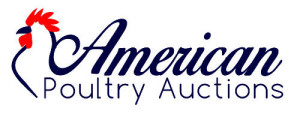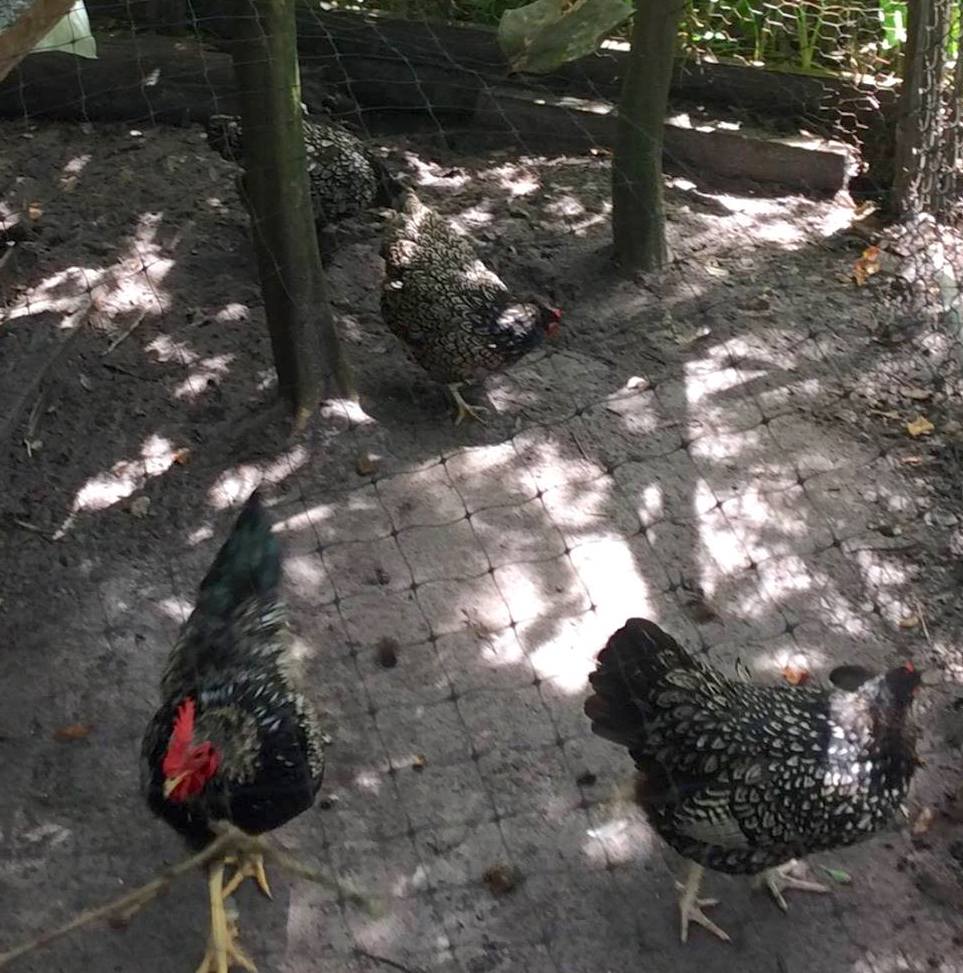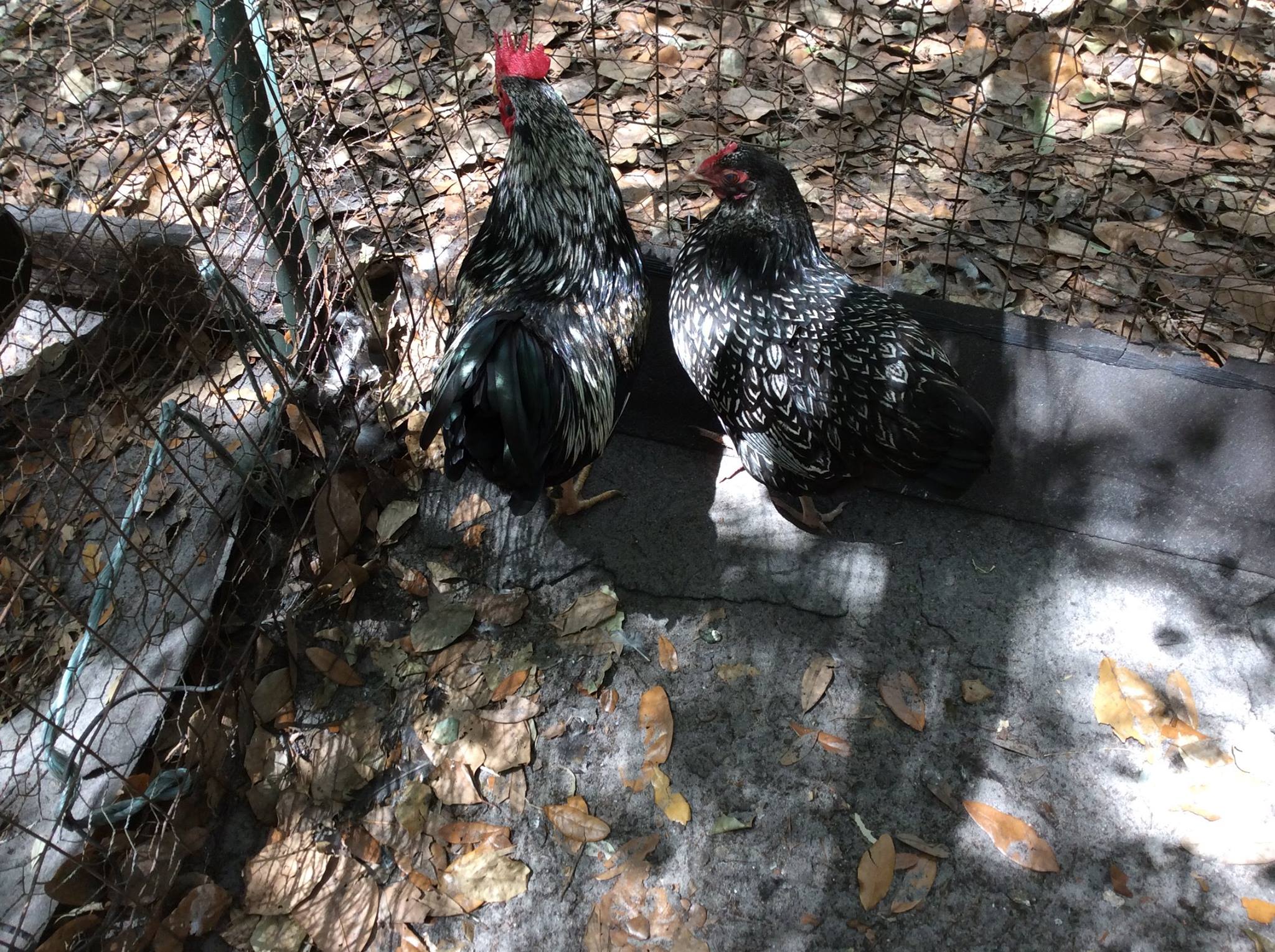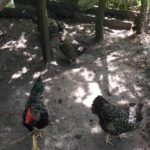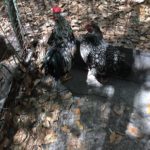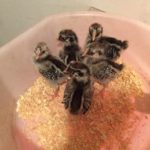I have 3 hens to 1 rooster.
This is a beautiful little bantam, as easy to keep as the large fowl.
The rooster and one hen came directly from Greenfire purchased as chicks, 2 hens are JN poultry.
Originating in Holland almost 200 years ago, Barnevelders are medium-heavy fowl known for their striking coloration and production of large dark eggs. The breed was derived from mixing imported Asian fowl with local Dutch chickens. They are a dual-purpose breed that in the past several decades has been adapted more for display than farm life. More than a dozen Barnevelder varieties in large fowl and bantam have been developed. Despite their stunning color patterns “Barnies” retain a reputation as a docile and productive breed. Hens typically lay 180-200 eggs per year, and the carcasses of the birds are full and meaty.
The most striking visual feature of the breed is the double laced feather pattern; an intricate arrangement that is as precise and beautiful as the most exquisite hand-sewn lace. The pattern emerged in the early 1920s in Europe and occurs only on the hens. Greenfire Farms imported from Holland silver double laced Barnevelders, and these birds are in both large fowl and bantam form.
History
In the 1850s Asian chickens began to arrive in Europe, where they were at first known as “Shanghai” chickens. These were initially cross-bred among themselves, and only later developed into breeds such as the Brahma the Cochin and the Croad Langshan. From about 1865, some of these Shanghai chickens were cross-bred with local farmyard chickens in the area of Barneveld. Towards the end of the nineteenth century there may also have been some breeding with a type called Amerikaanse Nuthoenders (“American utility birds”), which showed some similarity to the American Wyandotte; it is not known what these birds were, or if they were really American. In about 1906 there may also have been some cross-breeding with British Buff Orpington stock. According to Hans Schippers, the greatest influence on the characteristics of the Barnevelder was from the Langshan, which contributed hardiness, brown eggs, and good winter production.
The name Barnevelder was first used for birds shown at the Landbouwtentoonstelling or agricultural exhibition held in The Hague in 1911. From about this time attempts were made to breed for consistent type and colour. However, when the Dutch Poultry Club discussed whether to accept the Barnevelder as a new breed in 1919, it was found to be too variable. In 1921 a breeders’ association was formed, and the first standard was drawn up. The breed was recognised in 1923.
From about 1921 the Barnevelder was exported to the United Kingdom, where brown eggs were in demand. The birds were at first very variable, with single-laced, double-laced or – mostly – partridge plumage. Partridge and double-laced varieties were included in the British Poultry Standard; the double-laced became the principal variety.
My eggs are never washed and are stored in a cool, dark place at around 61 degrees. I hand deliver to the post office at the time of the trucks departure. Once the eggs leave my home I can no longer be responsible for their condition at arrival. However, I will replace broken ones under certain circumstances.
Please, note that hatch rate and fertility rates are 2 different things. Hatch rates can vary widely depend on the post offices handling of your eggs in transit and your incubation method. I do not guarantee hatch rate. I hand deliver to the post office just before the truck leaves for sorting facility, once they left my hands I can no longer be responsible for the condition of the mailed eggs. Eggs can be held at the post office for your pickup. This is a good idea if you live in an area with very hot or cold weather. It may increase hatch rate. If you would like to do this I need your local post office address and your phone number so they can contact you upon the eggs arrival. NPIP
Fertility is excellent and coming up with some very nice chicks. You can also find me on Facebook fancychickenbreedsfarm for more pics 352 593 0720 NPIP FL
